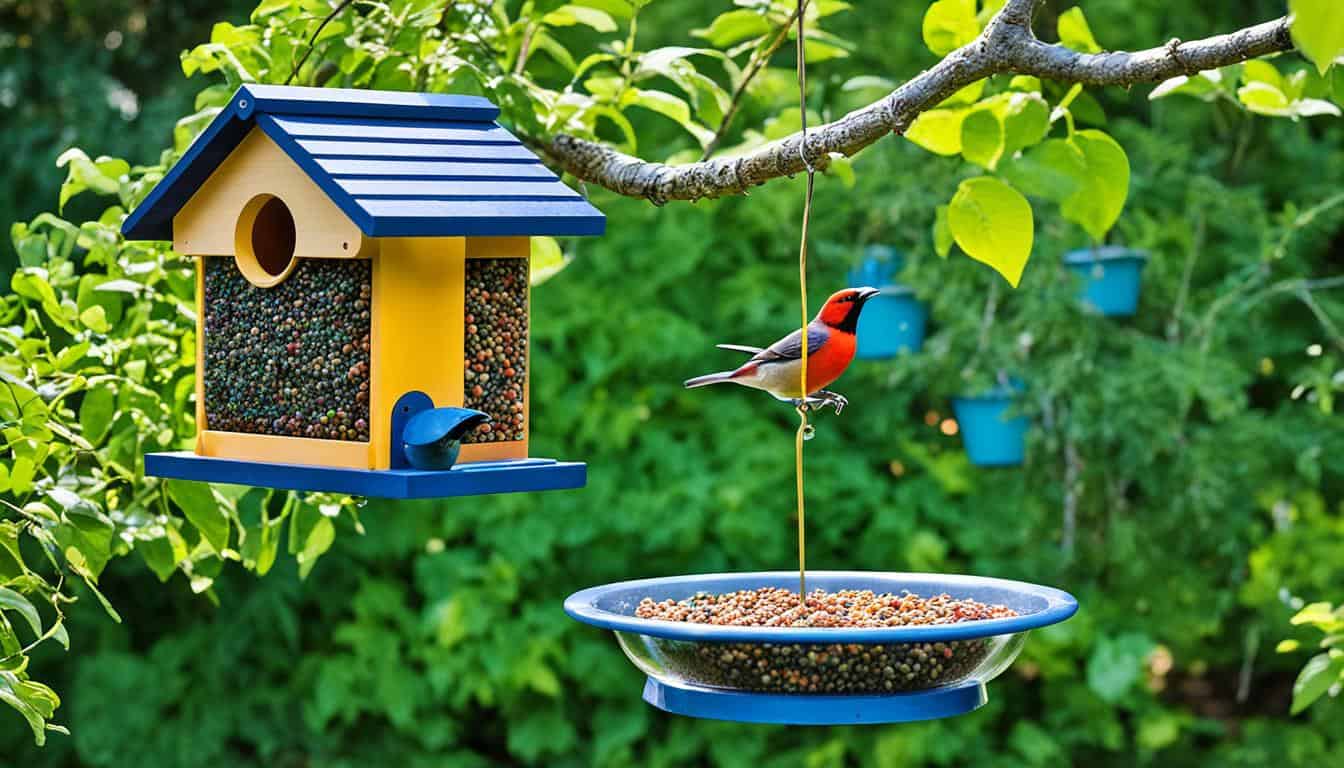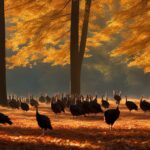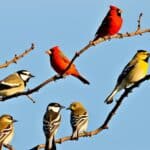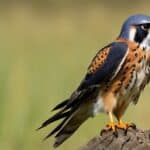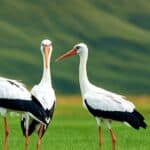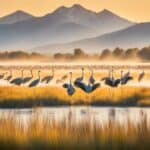Ever notice native birds flocking to your neighbor’s yard but not yours? Attracting them takes more than just putting up a bird feeder. It involves careful planning and creating a natural haven.
A bird-friendly backyard not only looks and sounds amazing but also brings natural pest control. Here’s how to do it. Begin by making a cozy spot for birds in your yard. This area should have bird feeders, baths, and shelter that provides enough cover.
For backyard birdwatching success, it’s all about finding the right balance. This means keeping the birds safe while making them easy to see. Ready to fill your garden with the beautiful sound of chirping? Let’s explore more tips on attracting native birds.
Find a Bird-Friendly Corner of Your Yard
Want birds to enjoy your yard? Pick a spot that’s good for both you and them. Think about where to place things so birds are happy, safe, and easy to see.
The Importance of Strategic Placement
When picking a place for birds, think nature. Choose spots with lots of green and places they can hide. This makes them feel safe and lets you watch without bothering them. Finding this balance is key to attracting birds.
Ensuring Safety and Visibility
Keep birds feeling safe by placing food and homes wisely. Spread these things out to avoid fights over space. If you space them out right, birds will stay longer. This makes your yard a happy place for them and a joy for you to watch.
Provide a Variety of Feeders
It’s important to have different feeders for birds. Each bird type likes a certain kind of feeder. By using many feeders, more birds will come to your yard.
Different Feeders for Different Birds
Using various feeders is key. For example, tube feeders suit finches and chickadees well. But, hopper feeders are best for sparrows and cardinals because they are much bigger.
Experiment with Feeder Heights
Changing the height of your feeders can attract more birds. Some birds like high feeders, while others eat closer to the ground. Trying different heights will help you know what the local birds prefer.
Using Squirrel-Proof Feeders
Having squirrel-proof feeders is a smart move. They keep your bird food safe from squirrels. These feeders often have special designs that only let birds eat.
| Feeder Type | Suitable Birds | Key Features |
|---|---|---|
| Tube Feeder | Finches, Chickadees | Small openings, vertical design |
| Hopper Feeder | Sparrows, Cardinals | Large food capacity, sheltered design |
| Squirrel-Proof Feeder | General Use | Weight-activated, caged for protection |
Buy the Right Bird Food
Choosing the right bird food is key to getting many types of birds in your yard. The food you pick should match what different birds like to eat.
Understanding Species Preferences
Birds have their own favorite foods. Learning these can boost your bird feeding efforts. For example, many birds enjoy dark oil sunflower seeds. Finch birds love thistle. Suet is perfect for woodpeckers, and mealworms attract bluebirds and robins.
Effective Food Combinations
Some food pairings welcome different bird species. Here are a few good mixes:
- Sunflower Seeds and Nuts – They’re loved by sparrows, cardinals, and chickadees.
- Suet and Mealworms – Great for woodpeckers and birds that eat insects, like robins.
- Thistle and Nyjer Seeds – These seeds draw in finches and goldfinches.
To get more specific advice, visit a garden store. There, they can help you with your individual backyard bird situation.
Add a Water Source
A water source is key for bringing birds into your backyard. Clean water invites birds to bathe and drink. It also boosts your backyard birdwatching joy. With these features in your yard, more bird types will visit.
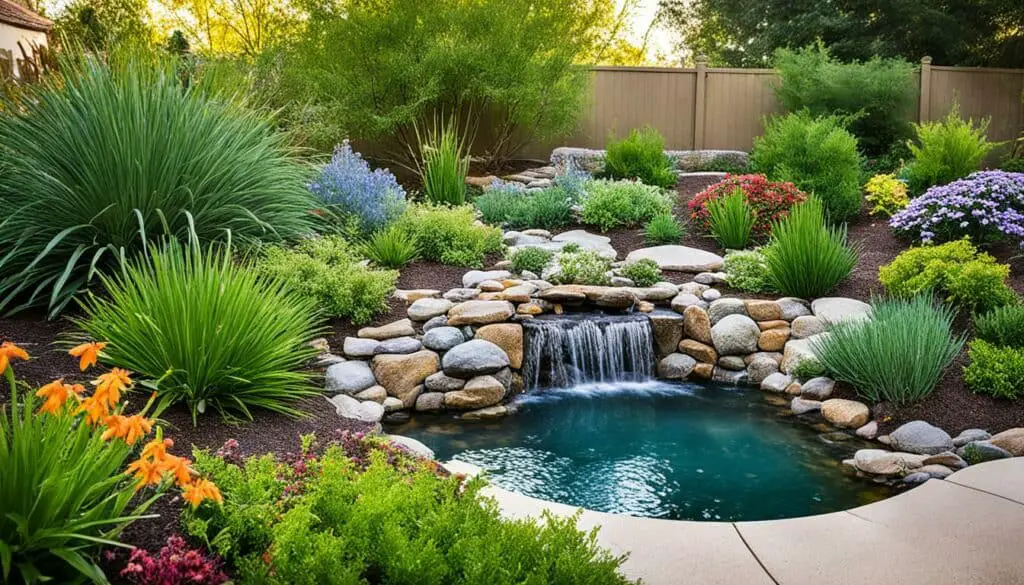
Bird Baths: Design and Maintenance
Choosing the right bird bath matters. Pick a shallow bath (1 to 3 inches deep) for birds’ easy use. It’s vital to keep the water clean and fresh to avoid health risks for the birds.
Advantages of Moving Water
Moving water, like fountains, attracts birds even more. It’s because such water feels natural and grabs their attention better. You can also use tools to keep the water from freezing in winter. This way, your bird-friendly spot remains welcoming all year.
Plant a Bird-Friendly Garden
Creating a backyard that birds love is all about the plants you choose. Native plants provide food and shelter for local birds. They make your yard a great place for birds to visit and live.
Choosing Native Plants
When you pick native plants, you’re helping the environment and the birds. They need less care but still give birds the food they know. Think about growing plants like coneflowers for seeds and serviceberries for nutritious berries.
The Role of Colorful Plants
Colorful plants not only look nice but also attract birds. Flowers like red columbines and orange trumpet vines bring hummingbirds. Berries in bright colors are a magnet for birds like robins and cedar waxwings. Mixing up plant sizes and how close they are creates a home full of food, shelter, and beauty.
Provide Plenty of Shelter
Creating a welcoming backyard bird habitat is more than just setting out food and water. It’s about offering safe places to hide. Birds like to find cover in thick plants, shrubs, and trees. These places keep them out of danger and bad weather. Adding diverse plants to your yard makes it a haven for many types of birds.
To make your space even more bird-friendly, think about putting up bird boxes or houses. These give small birds a safe place to be, like house wrens and chickadees. Make sure they’re the right size and shape. The birdhouses should match what each bird needs to feel at home.
Let’s take a look at some common sizes of birdhouses for different birds:
| Bird Species | House Dimensions | Entry Hole Diameter |
|---|---|---|
| House Wren | 4″x4″x6″ | 1″ |
| Chickadee | 4″x4″x9″ | 1 1/8″ |
| Bluebird | 5.5″x5.5″x10″ | 1 1/2″ |
| Nuthatch | 4″x4″x10″ | 1 1/4″ |
Adding the right kind of shelter matters for a successful backyard bird habitat. It helps birds feel safe. That means they’re more likely to visit and nest. This creates a great space for birds, making your yard a lively place for them.
Offer Opportunities for Nesting
Having the right nesting spots is key for bringing birds to your yard. Use the right materials and birdhouses to welcome them. This way, you make a friendly home for local wildlife and enjoy watching them.
Using Birdhouses and Nest Boxes
Birdhouses and nest boxes are essential for attracting birds. Different birds need different sizes and shapes. Know what fits your local birds, like a 1.5-inch hole for bluebirds, and smaller for wrens. Do your homework to meet their needs.
Providing Nesting Materials
Give birds what they need to build their nests. Use things like dried leaves and pet hair in a feeder. This not only draws birds to your place but helps them too. Keeping these materials around the whole breeding season will grow your bird friends.
Learn from Your Birds
Creating a lively backyard bird habitat goes beyond just adding feeders, plants, and shelters. It’s about watching the birds closely. You should pay attention to which birds come and what they like to do. Look at when they eat and what they eat. This helps you change things to make them feel more at home.
Start by noticing which feeders bring the most birds. See what food they like best. Some birds might like certain feeders more or want them at a certain height. Watch how they drink and bathe, too. Placing water near their favorite spots can attract them even more.
By noticing all this, your yard can turn into a spot birds love. Keep changing the food, feeders, and plants to keep the birds coming. With time, you’ll see more and different birds. This is how you create a place where birds and people are both happy, year after year.
FAQ
How do you attract native birds to your backyard?
Attracting native birds to your backyard is fun and educational. It helps with natural insect control and adds the joy of birdsong. Setting up feeders, baths, and shelters, and making your yard bird-friendly, ensures they will come.
How should I place bird feeders for maximum birdwatching enjoyment?
Place your bird feeders where you can see them from inside. But they should be close to trees and bushes. This way, you watch them without scaring the birds.
How do I ensure the safety of birds visiting my backyard?
Space out food and shelters to avoid fights between birds. Also, plant shrubs and trees to keep them safe from predators.
What type of feeders should I use to attract different bird species?
Use different feeders for different birds to attract a variety. For example, use tube feeders for finches and chickadees. And use hopper feeders for sparrows and cardinals. Choose feeders that are hard for squirrels to get into.
What food should I provide to attract a variety of bird species?
It’s key to know what birds like to eat. Offer dark oil sunflower seeds, suet, thistle, nuts, and mealworms. A local home and garden center can help with more advice.
How can I maintain a bird bath to ensure it is attractive to birds?
Choose a bird bath that is shallow, about one to three inches deep. Place it where you can add water movement, which birds love. Use heaters in winter to keep it from freezing.
What type of plants should I incorporate into my garden to attract birds?
Use native plants with bright flowers and berries. They are attractive to birds. Make sure to have plants of different heights and thicknesses for shelter and a variety of birds.
How do I provide shelter for birds in my backyard?
Besides plants, add bird boxes or birdhouses. Make sure they fit the needs of birds who like shelter. This keeps them safe from predators.
What materials can I provide for birds to use in nesting?
Put out natural nesting materials like dried leaves, grass, and pet hair in a cage or feeder. These are great for birds to make nests.
Why is it important to continuously observe birds in my backyard?
Watching the birds in your backyard over time teaches you about them. It helps you make your space better for them, so they come back often.

